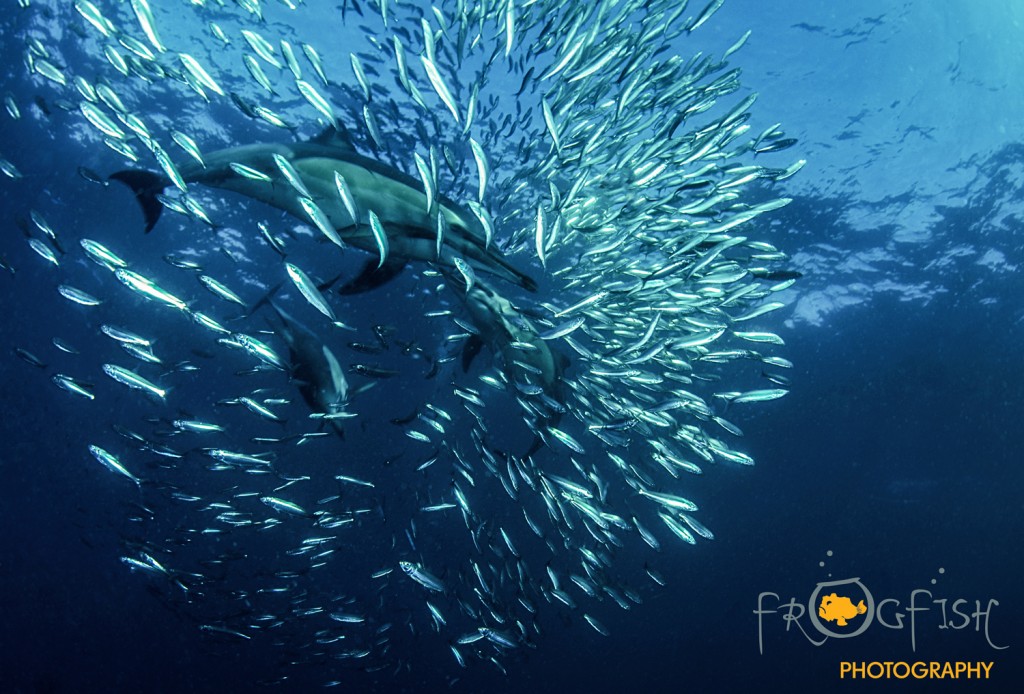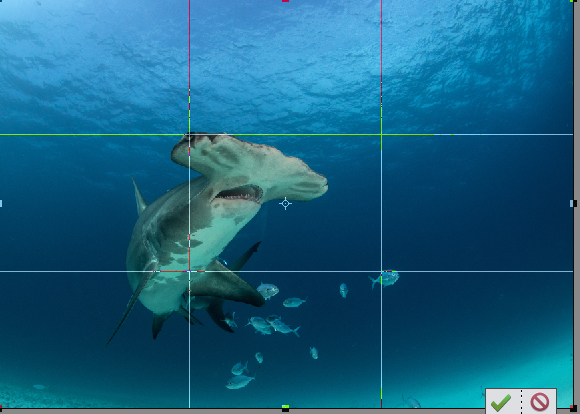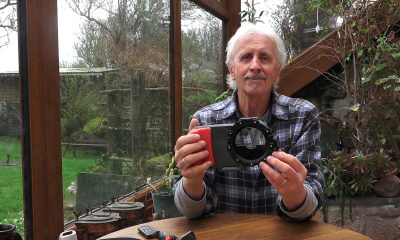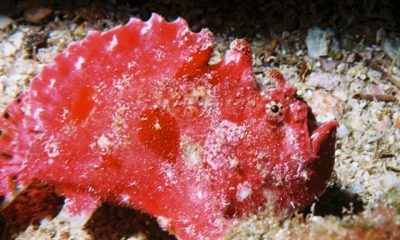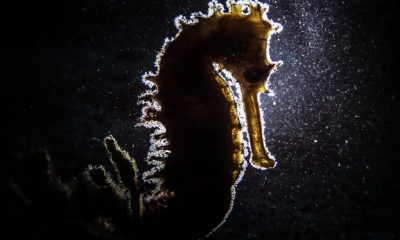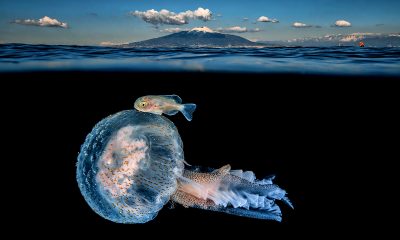News
Underwater Photography Essentials: Part 4
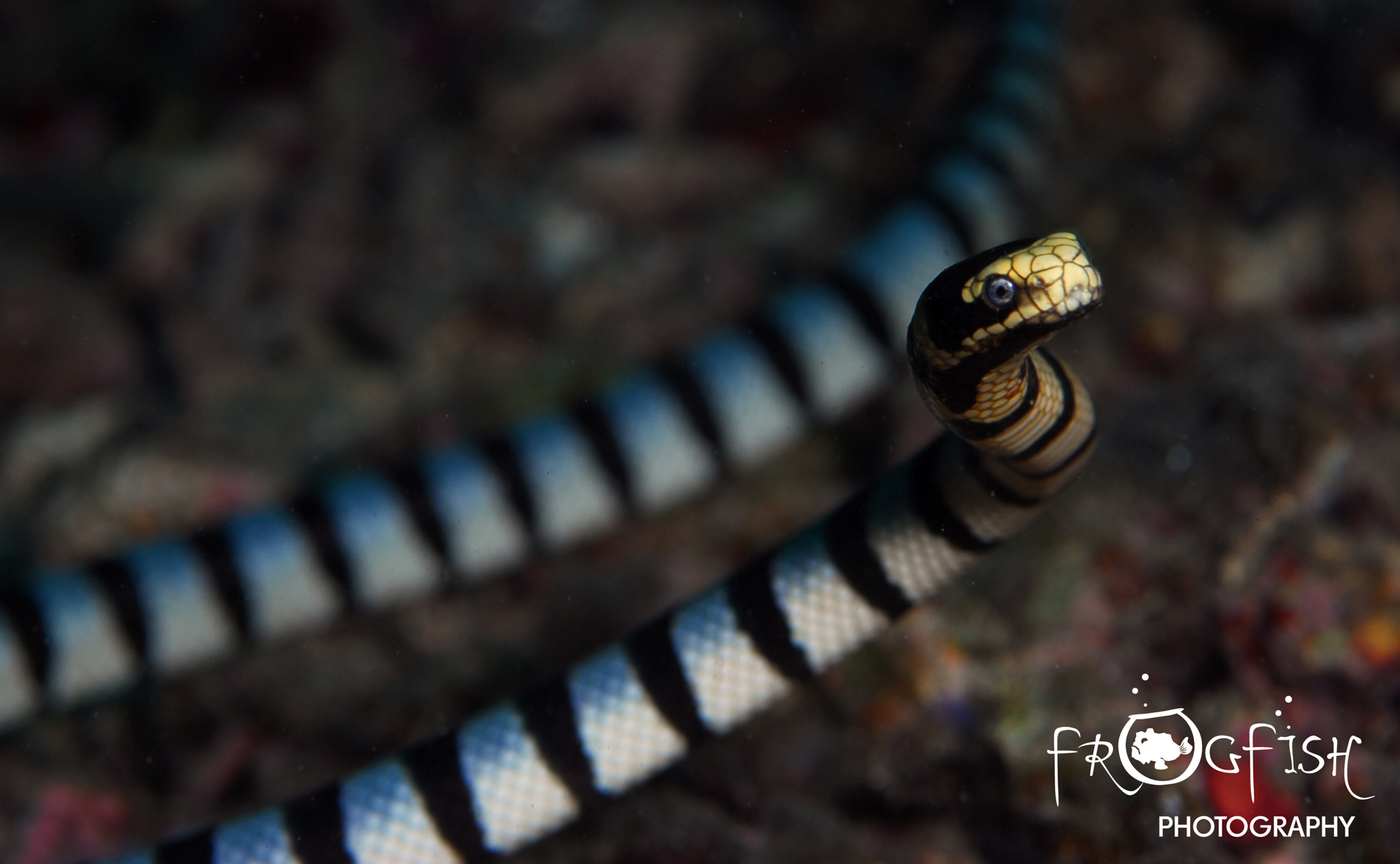
Tips, ideas and advice for budding underwater photographers
by Nick Robertson-Brown FRPS
Part 4: Composition – Rule of Thirds
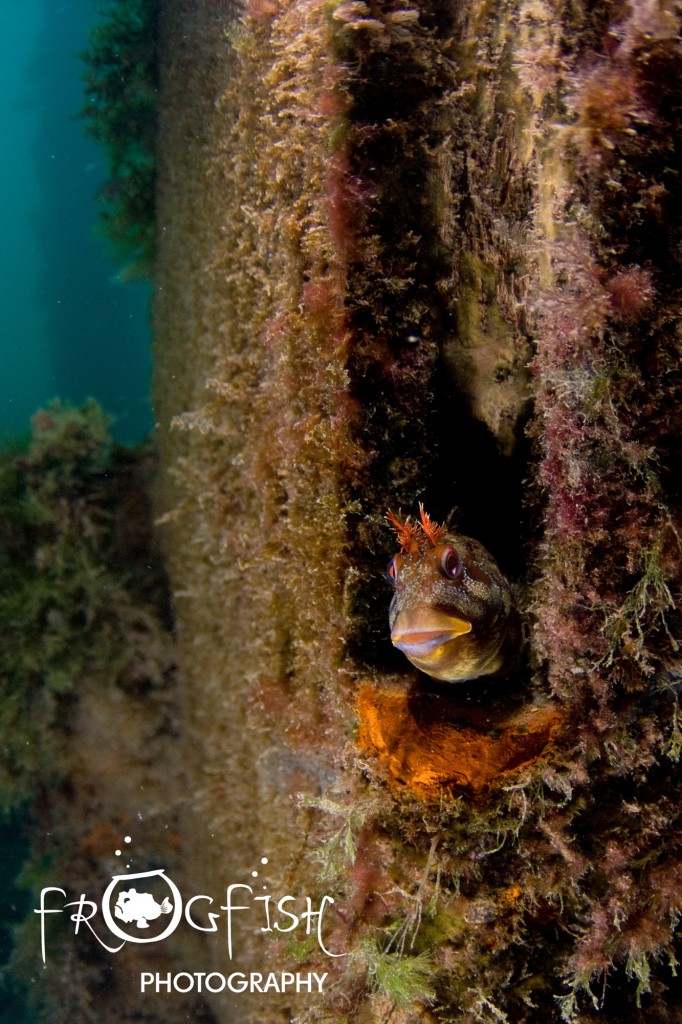 So far in this series we have discussed the technical aspects of how we get the right amount of light onto our subject in order to present it as we would like people to see it, i.e. as we imagine it looking through the viewfinder or on the screen. This technical part of capturing the image has more than a small element of artistry, as changing the f-stop will create a greater or lesser depth of field, allowing more or less of the background to be a part of the image. However, composition is pure art, and as you manoeuvre the viewfinder to your eye, or look at the screen on the back of your camera, you should now be thinking about how you want to frame the situation that you have in front of you. If you have got all the technical aspects, correctly set, then all you now need to do is to compose the scene.
So far in this series we have discussed the technical aspects of how we get the right amount of light onto our subject in order to present it as we would like people to see it, i.e. as we imagine it looking through the viewfinder or on the screen. This technical part of capturing the image has more than a small element of artistry, as changing the f-stop will create a greater or lesser depth of field, allowing more or less of the background to be a part of the image. However, composition is pure art, and as you manoeuvre the viewfinder to your eye, or look at the screen on the back of your camera, you should now be thinking about how you want to frame the situation that you have in front of you. If you have got all the technical aspects, correctly set, then all you now need to do is to compose the scene.
The first thing you have to decide when composing or framing your image is to know what the subject is. This may seem like a ridiculous thing to say but you need to decide on a single focal point; something, or someone you want to draw the viewer’s eye towards. This does not mean that you can only photograph one subject in the image, but you should make one individual, or one group of individuals, the centre of your attention – the subject. It shouldn’t necessarily be in the centre of your framing either, rather you should try to lead the viewer’s eye line through or towards it. You may capture a fantastic image of say a cuttlefish in aggressive mode attacking it’s reflection in your lens, but if the background is messy or interfering with the shot, then the image probably will not work. Anything in your image that distracts the eye away from the subject should be eliminated. Another important factor is the negative space, and any negative space that you use in an image can be as important, sometimes more so, than your subject. Negative space is simply the area that surrounds an object and so this, by definition, defines the boundaries of the positive space that you are using for your subject.
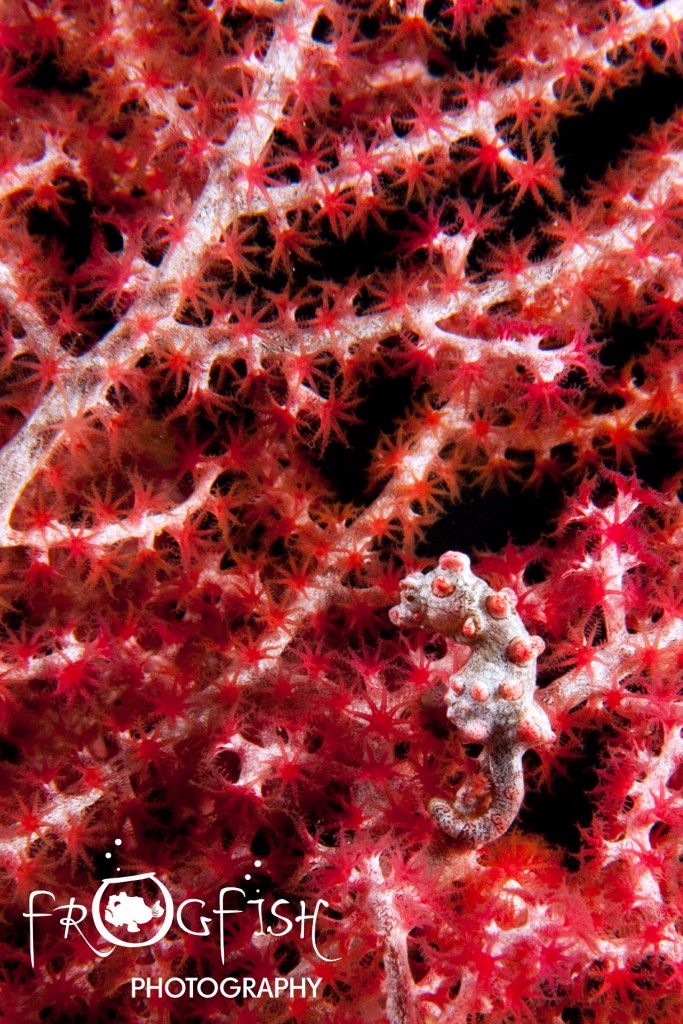 There may, of course, be occasions when you deliberately want to put your subject in its environment. A common, but often successful, use of this technique is the anemone fish protecting or guarding its host anemone or another example is a pygmy seahorse in its sea fan.
There may, of course, be occasions when you deliberately want to put your subject in its environment. A common, but often successful, use of this technique is the anemone fish protecting or guarding its host anemone or another example is a pygmy seahorse in its sea fan.
In any photography book, you can find rules and guidelines about composing images, but you should always remember that they are just guidelines and some of the best pictures can break all the rules. It is, however, a good idea to have them in your head as it has been proved many times over that there are certain formats that the human mind find appealing.
Rule of Thirds
The first of these is the rule of thirds, and this should be one key component to consider when you are framing your image. The idea of the rule of thirds is to divide your frame into nine equal sections and using this imaginary framework, you can then decide where to put your subject. Many cameras have a function where you can see this grid on the screen to help you with this. This can be very helpful as it may assist you in composing your image in a variety of ways. Firstly, you should look at the four centre crosses where the lines intersect, and rather than putting the centre of interest (your subject) in the middle of the frame, you should pick out a prominent feature from your subject and place it at one of these intersections. Putting your subject right in the middle of the image is called bullseye-ing and generally, although not always, doesn’t work.
Another way to view the rule of thirds is to look at the horizontal divisions where, for example, the top third could be used as negative space, with the subject placed across the middle and the supporting baseline, running along the bottom. This technique is particularly useful when photographing subjects such as underwater landscapes or a wide-angle shot of a wreck. You can use the foreground as a supporting baseline, with a reef or a wreck along the centre and the top third should be the negative space, although this would also work really well with a diver or other subject hanging in it to balance the overall image.
————————————————————————————————————————————————————
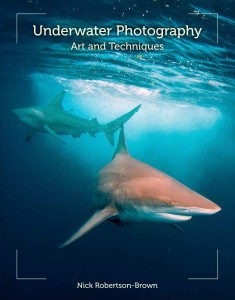 Do you want to learn more? You can pick up a copy of Nick’s book “Underwater Photography Art & Techniques” by clicking here. For a signed copy, click here.
Do you want to learn more? You can pick up a copy of Nick’s book “Underwater Photography Art & Techniques” by clicking here. For a signed copy, click here.
Underwater Photography Courses
Contact Nick for information on the Frogfish Photography Complete Underwater Photography Award, designed for 1:1 and small group sessions to improve your underwater photography at your pace.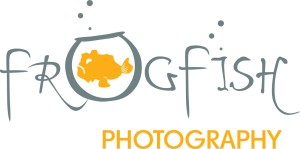
www.frogfishphotography.com | frogfishphotos@gmail.com | ![]() +44 (0)161 9177101
+44 (0)161 9177101
Blogs
EXCLUSIVE: Jeff Goodman interviews Mark Spiers, CEO of New Scuba Diving Training Agency NovoScuba

In a video recorded exclusively for Scubaverse.com, Jeff Goodman interviews Mark Spiers, CEO of new scuba diving training agency NovoScuba.
Find out more about NovoScuba at www.novoscuba.com.
News
Charting New Waters; NovoScuba Goes Global with the Launch of their Revolutionary Dive Training Agency!
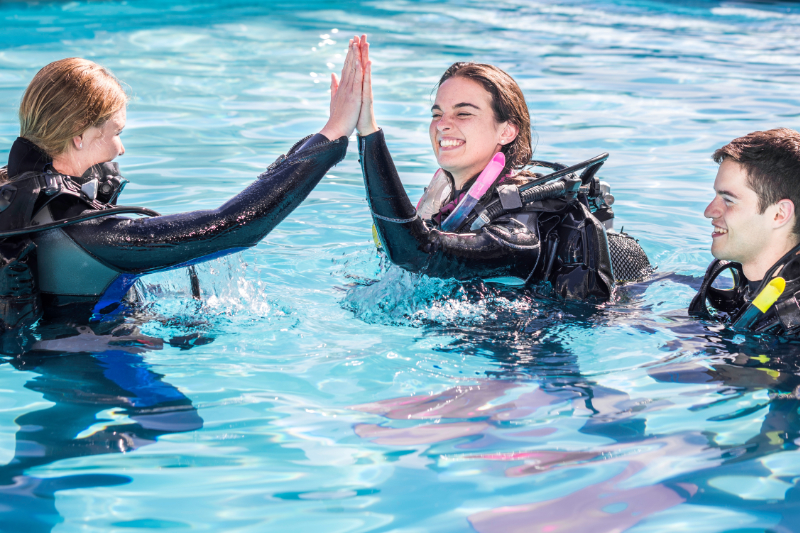
Discover a New Era of Dive Education: NovoScuba Brings Innovation to the Surface! Fully ISO Certified and Equipped with Cutting-Edge Technology.
 With a combined experience spanning over a century in the diving industry, a team of accomplished dive store owners, managers, and professionals unveils NovoScuba, a ground-breaking dive training agency poised to redefine the benchmarks of underwater education. Launching in May 2024, NovoScuba promises a revolutionary approach to dive training. Their vision is to make diving accessible to everyone, share success within the dive community and emphasise positive interactions with the planet.
With a combined experience spanning over a century in the diving industry, a team of accomplished dive store owners, managers, and professionals unveils NovoScuba, a ground-breaking dive training agency poised to redefine the benchmarks of underwater education. Launching in May 2024, NovoScuba promises a revolutionary approach to dive training. Their vision is to make diving accessible to everyone, share success within the dive community and emphasise positive interactions with the planet.
NovoScuba’s global debut marks a significant milestone in the dive industry. Driven by a vision to challenge convention and harness the power of technology, NovoScuba aims to revolutionise the dive training landscape through its innovative business model, which is digitally native, making it the most technologically advanced dive training agency to date.
“We recognised the need for change in the dive training industry and saw an opportunity to leverage technology, and redefine existing business models to create something truly innovative,” said Mark Spiers, CEO of NovoScuba.
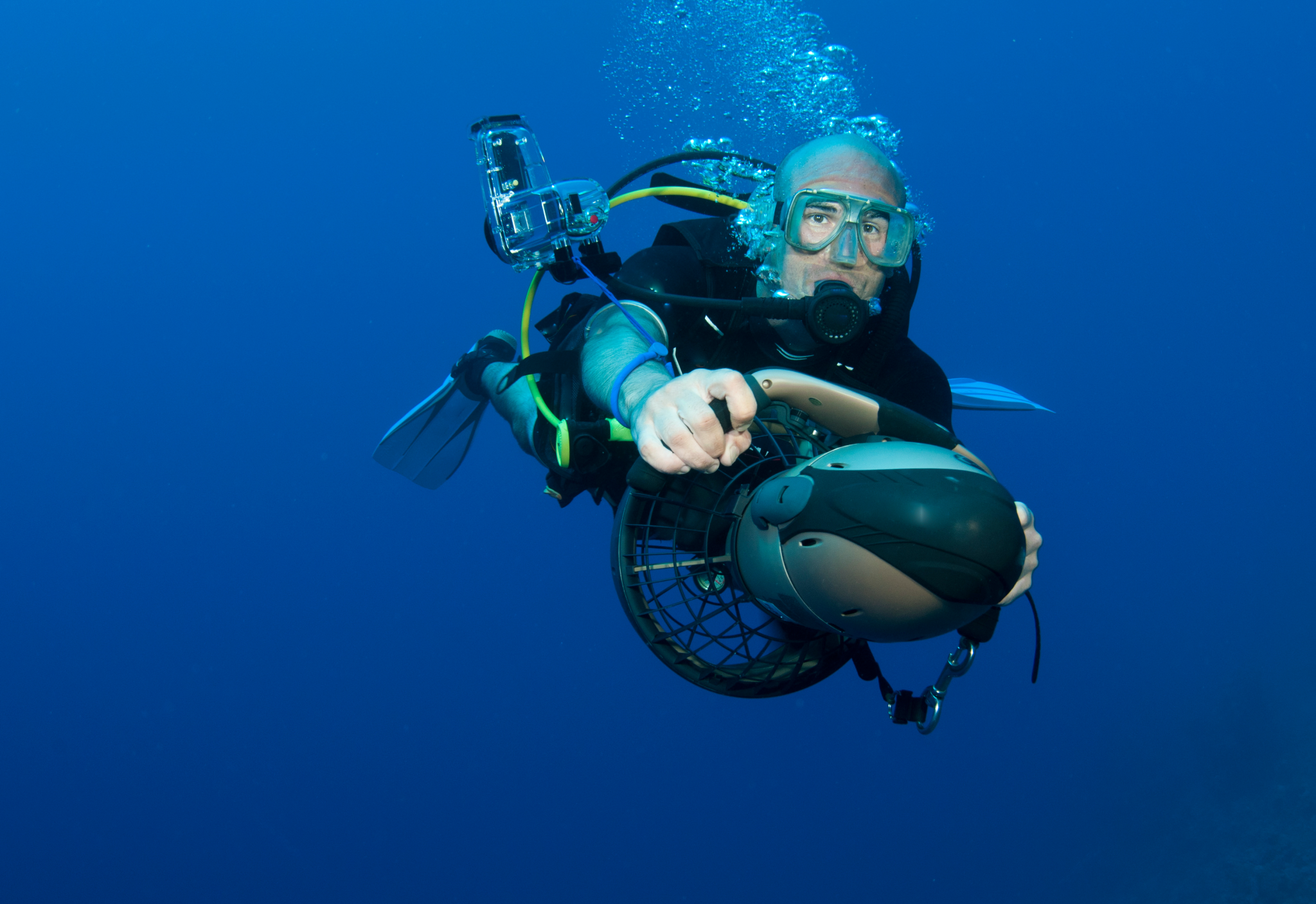
NovoScuba’s platform offers state of the art training programmes ranging from introductory up to professional diving, including various specialties. All programmes meet international standards and ISO certifications are in place. This commitment to shared success, accessibility and positive results for the planet, all at a cost effective and affordable level, is what will make NovoScuba stand out.
“Our deep understanding of traditional pain points for the industry, combined with our digitally native approach positions NovoScuba as a game-changer in dive education. Offering unparalleled initiatives such as student subscription, open access to all course materials, pay as you certify, no stock required, monthly membership payments, payment in local currencies, one-click certifications, and membership freezing, NovoScuba is set to redefine the industry. Available in 13 languages, at launch, the NovoScuba courses are written for the modern divers, with a focus on up-to-date content, interactive learning, and an engaging platform,” Mark Spiers concluded.
NovoScuba is challenging a change in the industry, redefining established traditional systems, and ushering in a new standard of excellence, support, and partnership. Their collaborations with dive stores, pros and underwater enthusiasts won’t demand exclusivity, prioritising earned loyalty, and an understanding that their Member’s success is key to their own.
NovoScuba
Diving Redefined.
-

 News3 months ago
News3 months agoCapturing Critters in Lembeh Underwater Photography Workshop 2024: Event Roundup
-

 Marine Life & Conservation Blogs3 months ago
Marine Life & Conservation Blogs3 months agoCreature Feature: Swell Sharks
-

 Blogs2 months ago
Blogs2 months agoMurex Resorts: Passport to Paradise!
-

 Blogs2 months ago
Blogs2 months agoDiver Discovering Whale Skeletons Beneath Ice Judged World’s Best Underwater Photograph
-

 Gear Reviews3 weeks ago
Gear Reviews3 weeks agoGEAR REVIEW – Revolutionising Diving Comfort: The Sharkskin T2 Chillproof Suit
-

 Gear Reviews3 months ago
Gear Reviews3 months agoGear Review: Oceanic+ Dive Housing for iPhone
-

 Marine Life & Conservation2 months ago
Marine Life & Conservation2 months agoSave the Manatee Club launches brand new webcams at Silver Springs State Park, Florida
-

 News2 months ago
News2 months agoPADI Teams Up with Wellness Brand Neuro to Drive Ocean Change and Create a Blue State of Mind


